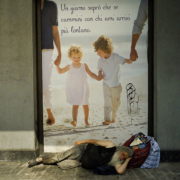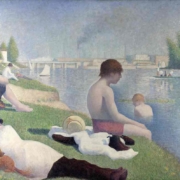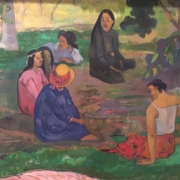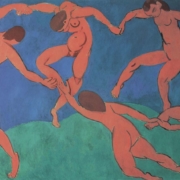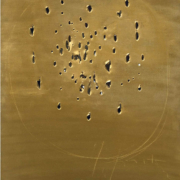Presentation “Family, group and psychoanalysis”
This issue is the second part of a first one, edited one year ago and named “Baby observation and analytic presence”. Our path has therefore started from the silent, not judging neither interpreting reflection about a new-born and its care context and now instead tries to analyse the possibilities of an active therapeutic work with the family group.
In the first issue we wondered indeed what the baby observation could teach to an analyst in training. Doing so, we particularly emphasized that this path puts the observer in direct contact with archaic psychic quotas that always remain active in the psyche and that should never be forgotten by the analyst, even when he is working with adults. We now notice that the psychological configuration of the family that is experienced “in construction” in the baby observation, remains central in the therapeutic work with families as well. Indeed, as and more than the observation, the psychoanalytic therapeutic work with the family group allows to reach and understand the original psychic structure on which the family is based and within which the children individualities are structured.
The family group is a complex system, made up of many different levels and subgroups (the same with which the baby observation allows contact). Part of the family group is, in fact, the parental couple, which originally was the conjugal couple and which is still affected by the psychic mode and history of both members; also the couple or the subgroup of the siblings, as well as the couples formed by each of the two parents with each child.
The family therapy therefore allows us to grasp the profound complexity that characterizes the original group matrix that the parents, with their personal background and the particular configuration of the couple, they built together and from which the children develop their personal and individual structure. This is a system in which the tension between individuality and group seems to be particularly strong, always active and present. This is the original matrix from which the necessary psychic movements happen so that a group matrix can first be created from which the separation and identification of individual members can then take place.
The issue opens with the work of Dr. Gilles Catoire which first offers an historical review so to systematize the development of psychoanalytic therapeutic work with families. The article then continues with a description of the family group that allows fully understand its complexity and organization in many different levels that intersect and influence each other continuously and reciprocally. The clinical work with the family group is then deepened, both in its more technical aspects, such as the creation of a suitable setting, and in its transferential level which is considered as the expression of a primitive group functioning, of the basic structure on which the family rests.
The issue then continues with the paper of Dr. Bernard Duez who describes the new configurations of the family group created by the use of the digital network, on which the family configuration is inscribed. The author describes how access to a virtual group fits and intersects in the oedipal movements and in the necessary adolescent re-actualizations of the original psychic scenes, that is to say: the transition from the family group to the social one, the adolescent release from the family. According to the author, the technological object, in constant change and expansion, follows the work of adolescence, that is, the search for one’s own space, for another presence (familiar and social) but also for the necessary distance from it, thus to be able to build an own individuality and handle the changes adolescence undergoes. Furthermore, the technological object can become a generational marker, an aspect that being specific to the latest generations, clearly distinguishes them from previous ones, that is, parental ones.
The article of Dr. Rosa Jaitin and Dr. Philippe Robert offers us a deepening on the different inter and intra-psychic rhythms of family transmission. From the study of the family phases, the authors examine the different times and rhythms that allow the generation of a family group, of new autonomous individualities and the transmission of specific experiencing and categorizing models. A discussion is therefore offered in which the different times that structure the family, the chronological, the mythical and the unconscious one, overlap and intersect, constantly influencing each other and allowing, when this coexistence is harmonious, to create a bond between different generations but also to let the new members build their own organization and develop their own autonomy and individuality.
Dr. Gilles Catoire then offers us a second article, focused on the concept of authority within the analysis room. The author considers authority not as something belonging to the individuality of the subject, rather he finds its roots in the group quotas of the mind. Indeed, authority arises and is expressed starting from the social, cultural and family context and it is, therefore, necessary for a full understanding, to take into account its inter- and trans-subjective aspects.
The author also examines the different functions of authority and, above all, its role in the transference process in the session with the family group.
Dr. Andrea Narracci reports the work done in the group within psychiatric institutions and made up of many families, patients and even the operators themselves. Starting from the work of Jorge Garcia Badaracco, the author recounts the development of this type of intervention relying on both a historical and a more personal story, concerning his career as a multi-family group analyst. Through the use of a short clinical cartoon, the author describes the strength of the symbiotic processes underlying psychotic pathologies and the way they are acted within the group.
Finally, Dr. Susanna Piermattei reports an analysis of the loving couple, interpreted under the concept of fusionality. This is considered here as a physiological and constructive modality of the psychic apparatus, a particular type of relational modality that allows the creation of a space made by the common aspects of the two members of the couple. This can be considered space within which a common project can be created and, finally, a family.
In conclusion, I think it is important to thank all the people who have contributed to this issue. First of all, Dr Marinelli, without whom this edition would never have seen the light and who with her help and constant support has accompanied me throughout the work for the construction of these two numbers.
It is also important to thank all the authors who contributed with their articles, summarized here briefly but that certainly deserve a much deeper attention and interest than these few lines. I especially thank the authors who have waited a long time before seeing their works published, for their patience and confidence in all the work of Funzione Gamma.
Finally, I would like to thank all the legacy of Funzione Gamma magazine, the previous articles and issues that have been for me a source of inspiration and knowledge during these years. I would therefore like to thank all the authors who over the years have dealt with the family group, such as Dr Mellier and, above all, Dr Neri, who was certainly the most important starting point for my article on fusionality but whose influence may be felt, I think, along the whole number.



